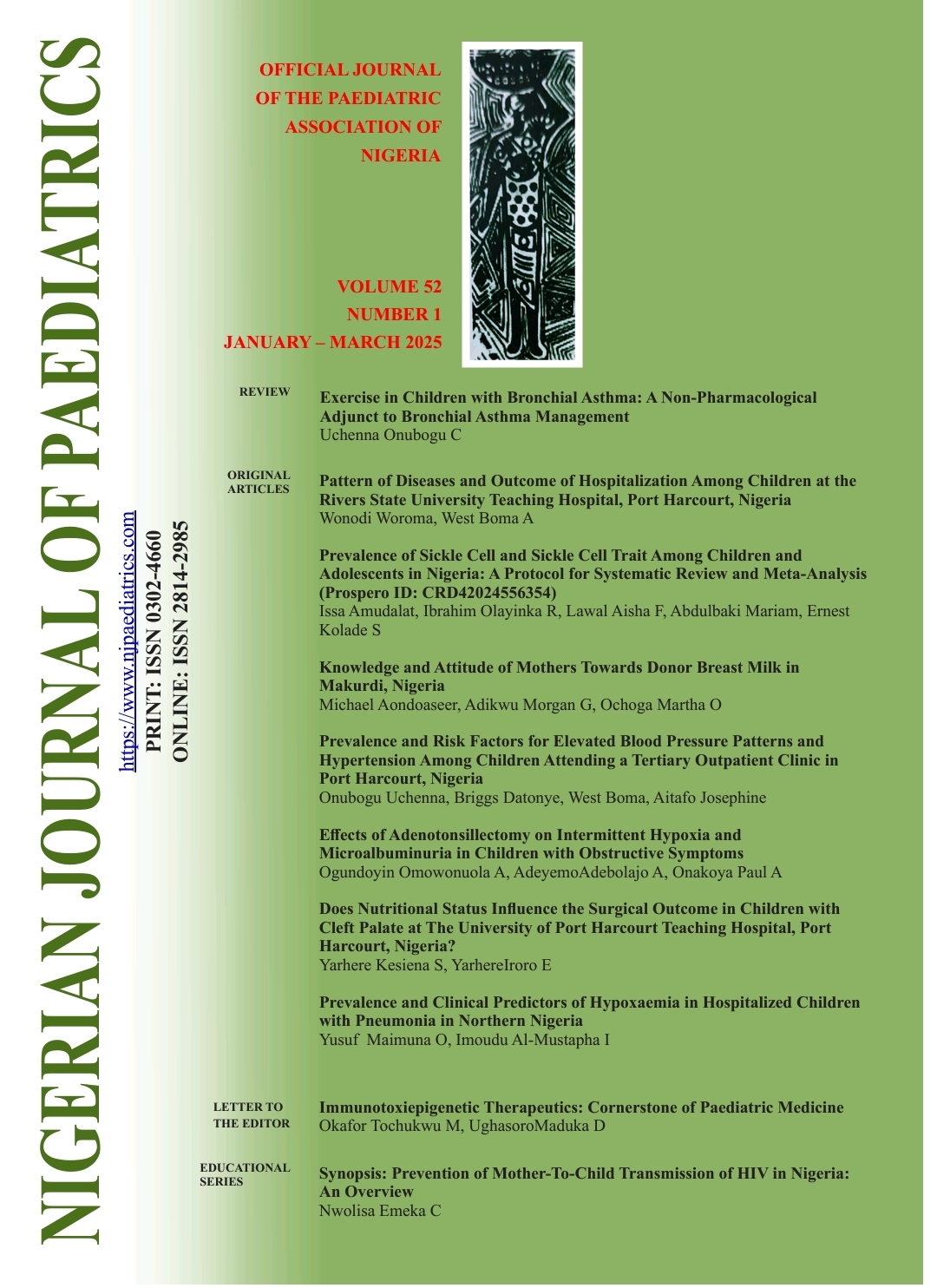Synopsis: Prevention of Mother-To-Child Transmission of HIV in Nigeria: An Overview
DOI:
https://doi.org/10.63270/njp.2025.v52.i1.2000010Abstract
The Human Immunodeficiency Virus (HIV) can be transmitted from an infected mother to her child during pregnancy, delivery and breastfeeding. Mother-to-child transmission (MTCT) is known as vertical transmission and is acknowledged as the commonest means of HIV infection in children. The burden of mother-to-child transmission of HIV is very high in sub-Saharan Africa, and Nigeria is not exempt. The reasons for this high burden include the high rates of heterosexual transmission, high prevalence of HIV in women of reproductive age, high fertility rate, prolonged breastfeeding culture and sub-optimal access to general HIV prevention interventions. HIV prevalence in Nigeria is 1.4% in adults aged 15 – 49 years. However, women have almost 4 times the prevalence of men in the same age group. This gender disparity is greatest among females aged 20-24 years, the age when most Nigerian women bear children.
Prevention of Mother-to-Child Transmission (PMTCT) of HIV is a critical public health initiative aimed at reducing the transmission of HIV from an infected mother to her child. Without interventions, mother-to-child transmission (MTCT) rates range between 15% and 45%. However, the risk of MTCT can be reduced to less than 2% with a package of evidence-based interventions. Globally, effective PMTCT has reduced the MTCT rate to low levels, but in Nigeria, the pooled MTCT rate is at 2.7%.
Downloads
Published
Issue
Section
License
Copyright (c) 2025 NIGERIAN JOURNAL OF PAEDIATRICS

This work is licensed under a Creative Commons Attribution 4.0 International License.
This is an open-access journal, and articles are distributed under the terms of the Creative Commons Attribution 4.0 License, which allows others to remix, transform, and build upon the work even, commercially, as long as appropriate credit is given to the author, and the new creations are licensed under identical terms

